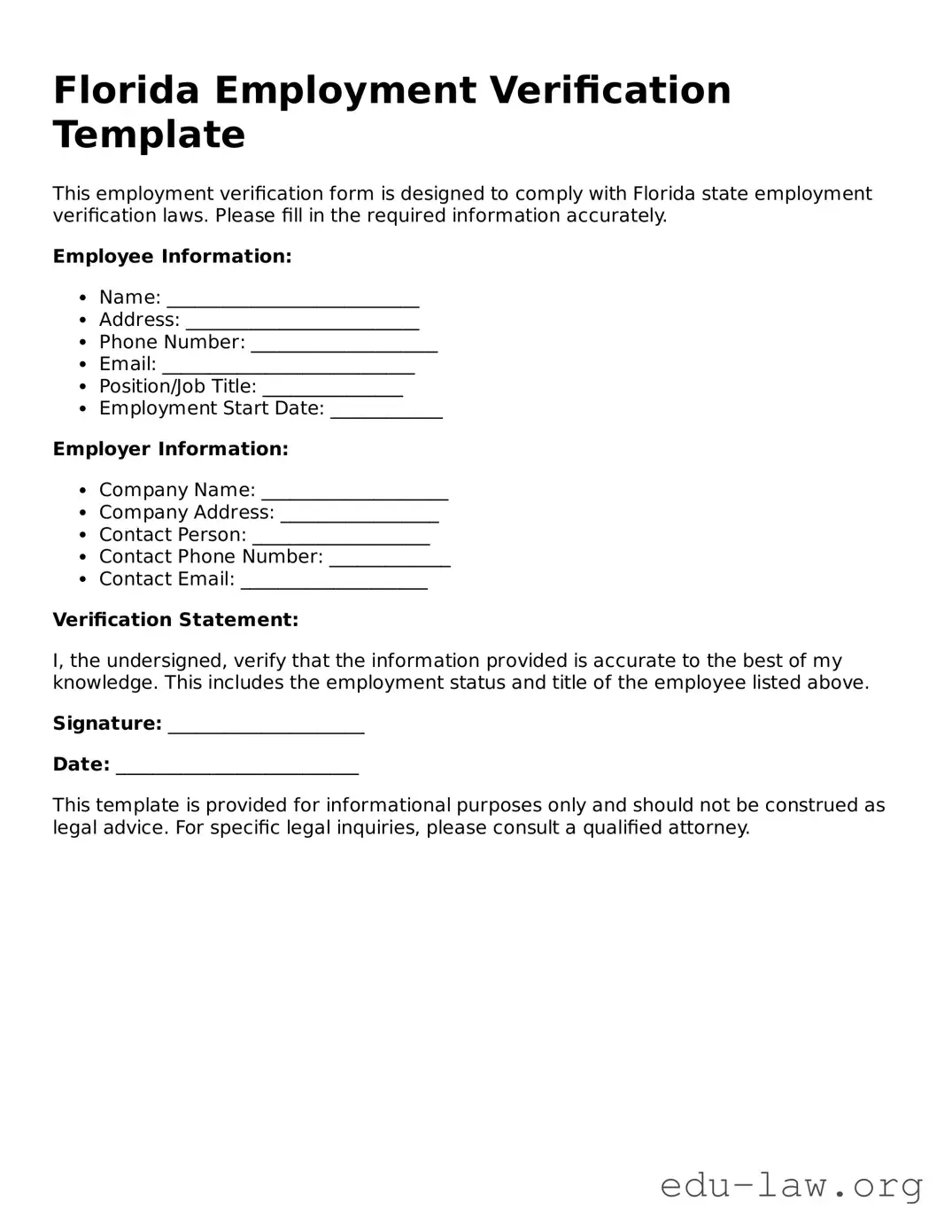Florida Employment Verification Template
This employment verification form is designed to comply with Florida state employment verification laws. Please fill in the required information accurately.
Employee Information:
- Name: ___________________________
- Address: _________________________
- Phone Number: ____________________
- Email: ___________________________
- Position/Job Title: _______________
- Employment Start Date: ____________
Employer Information:
- Company Name: ____________________
- Company Address: _________________
- Contact Person: ___________________
- Contact Phone Number: _____________
- Contact Email: ____________________
Verification Statement:
I, the undersigned, verify that the information provided is accurate to the best of my knowledge. This includes the employment status and title of the employee listed above.
Signature: _____________________
Date: __________________________
This template is provided for informational purposes only and should not be construed as legal advice. For specific legal inquiries, please consult a qualified attorney.
